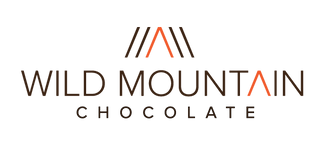
When You're Looking for Superior Chocolate, Look to Peru!
Peru has a long and esteemed history of producing some of the most superior cacao in the world.
One of the most important exporters of cacao, Peru is at the top of the heap, producing a product where, no joke, only 10% of the world’s cacao harvest can be considered high-quality.
Some of the Best Chocolate in the World is Made from Cacao from Peru
Peru is the world’s ninth largest cacao producer and the world’s largest organic cacao producer. More than 50,000 Peruvians earn a living through the cultivation and production of cacao with Peruvian farmers working an average farm size of 2 hectares.
Peruvian cacao is cultivated primarily in the regions between the Andes Mountains and the Amazon rainforest. The main production zones include Cajamarca, San Martin, Huanuco, Junin, Ayacucho, Cusco and Puno.
Chocolatiers and artisan chocolate producers from all corners of the world have used Peruvian cacao to create the world’s finest chocolate products.

That said, it shouldn't come as a surprise that the cacao tree actually originated in the Amazon jungle, which explains why the indigenous people of the region have enjoyed cacao for centuries. Today, Peru grows three types of cacao: Trinitary, Amazon foreign, and Creole. The Creole variety is the most common and in the highest demand for it's exceptional quality due to beans' high fat content.
Diversity is Peru's Cacao Superpower
Peru is incredibly biologically diverse, ranking among the most diverse in the world and fourth with regards to diversity of plant species. This fact is essential to understanding the existing, as well as the potential and developing, quality of Peruvian chocolate.
The combined impact of the diversity of species, soils and climates on cacao go a long way in explaining the exceptional flavour – taste and scent – making for an increasingly popular bean.
Theobroma, the Latin name for cacao, means “food of the gods.” When the Spaniards arrived in Peru, the Incas were using cacao to make a special beverage using the ground beans, flavoured with fruit juice, spices and pyschoactives. It was a drink prized highly, carrying great cultural significance to the indigenous people.
It took a while for Europeans to embrace the taste — one 16th-century Spanish missionary called the chocolate beverage beloved by the Mesoamericans, "Loathsome to such as are not acquainted with it, having a scum or froth that is very unpleasant to taste."

As shown in the image above, liquid cacao is identified in scenes of court, commonly depicted on ceramic vessels. The drink was consumed while frothy, achieved through pouring the liquid between vessels. There is other documentation depicting the grinding of cacao beans, as well as the cacao trees and pods hanging from branches.
It was a valuable commodity not only because of its association with royals but also due to its frequent presentation in burnt offerings along with blood – yes, human! – and stinging or psychoactive spices.
After colonization, it didn't take long for the evolution into the modern day confection to begin. By the 17th century, sugar was introduced and it took hold the world over to grow into the $93 billion-a-year global industry we know today.

Much of of Peru’s cacao is sourced from independent, small family run farms who rely on a good crop to make a living. As such, these farmers often lack bargaining power to achieve a good price. Wild Mountain, however, is proud to produce chocolate made from Fair Trade certified Peruvian cacao ensuring the farmers are paid a higher price for their product.
Naturally, these cacao farms are in extremely rural areas where weather and road conditions can make transporting the crop very difficult. Thankfully, cacao beans are resistant to heat and long periods of transportation, so the Peruvian beans can be shipped all over the world and transformed into the delectable treat we all love.

Peru is a cacao producer on the rise. Economically speaking, the past five years Peru has seen the highest economic growth and lowest inflation in the Americas and, based on facts pertaining to agro-exports, is on the path of significant economic development and progress.
Peru has been nurturing the necessary conditions to continue to expand their production of incomparable cacao, as well as a strong foundation to expand their international presence.
This growth provides the opportunity for Peruvian cacao to continue to provide for the best in chocolate product while helping to contribute to a better standard of living for more Peruvians.
Here at Wild Mountain Chocolate, we are so proud of the chocolate we make from our Peruvian sourced beans: lightly fruit with a more mellow flavour profile. It is a delicious and satisfying introduction to the world of craft chocolate.
Taste it today – check out our Organic 72% Peru Bar!

